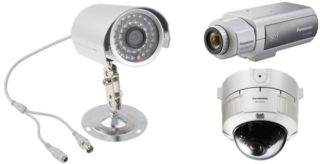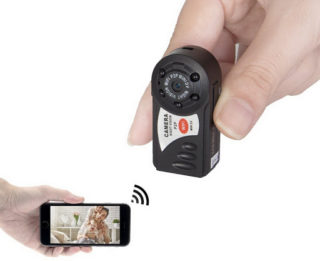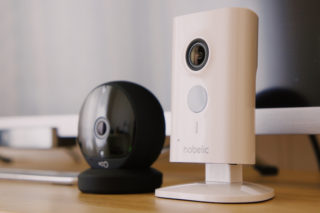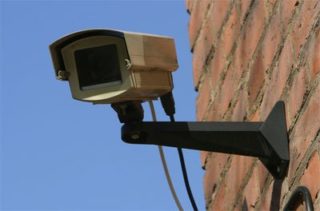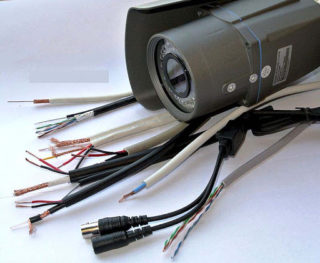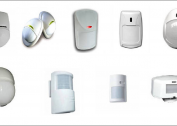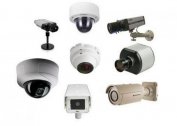In modern conditions, CCTV cameras are increasingly perceived not as a sign of affluence, but as a necessary measure to protect an apartment and private property. With their help, it is possible to expand the capabilities of security systems and reduce the likelihood of penetration into protected areas. To equip a tracking system based on them, you will need to familiarize yourself with the varieties and features of the choice of electronic devices.
The purpose of CCTV cameras
Security systems based on surveillance cameras are designed to protect any objects by video monitoring their status online. The received information is subsequently analyzed, and then processed and stored on digital media. Video surveillance for the home itself is organized in such a way that the cameras cover the most important areas with the values located on them. Usually they are installed so that the parking lots, racks and showcases of trading floors, as well as storage spaces, etc. are clearly visible on the monitor.
In addition, the functions of outdoor surveillance cameras, for example, include video monitoring of places of possible penetration of a guarded object. They are used to monitor the condition of passage zones, entrance and exit doors, fencing structures, gates and similar structures. At industrial enterprises and train stations, as well as at airports and work offices, a video camera for video surveillance is used as a means of monitoring moving objects.
Classification by video transmission method and purpose
The following types of cameras are used to work as part of security systems:
- analog models or optical devices that transmit the picture via coaxial cable to the DVR;
- IP cameras - digital or network monitoring devices.
- HD-SDI optics, which is a combination of analog and IP cameras.
Analog samples work in AHD, HD-TVI, HD-CVI standards, allowing you to get a picture in high quality. Their network counterparts are equipped with ultra-sensitive matrices that convert the image into digital form and send it directly to the Web server. This eliminates the need to lay a separate cable and allows you to monitor the object from any point where there is Internet access. Hybrid HD-SDI cameras form a fully digital image, after which, bypassing the processing stage, it is transmitted to the server via fiber optic or coaxial cable. The signal thus obtained in accordance with a given program is encoded directly on the spot.
By their purpose, cameras are divided into internal and external. The first are installed indoors and protected objects and have a limited range. The second are intended for installation on the street and monitoring of large areas of space.
Design Classification
In accordance with the design, outdoor and indoor CCTV cameras are divided into the following types:
- domed;
- case;
- rotary;
- compact.
The former have a plastic case made in the form of a hemisphere or in the form of a ball placed in a glass. With the help of case models, it is possible to easily disguise the observation device as a lighting device.Universal mount allows you to orient rotary products in a fixed direction or adjust them to the full coverage of the controlled area.
Case products are durable, but suitable for indoor use only. They can be cylindrical with a protective visor, or modular. Some models are generally devoid of housing and are designed to perform specific functions. They are sometimes mounted in a special casing with heating in the winter.
Miniature and compact camera models are small in size and are well suited for covert video surveillance.
Anti-vandal devices have a robust housing based on a metal alloy. The lens of such products is protected by impenetrable armored glass.
Additional Function Classification
By the presence of additional functions, all cameras on the market are divided into the following varieties:
- operated as part of the smart home system;
- wireless Wi-Fi surveillance cameras for homes with remote access;
- with built-in microphone or with a connector for its connection;
- with a slot for a memory card;
- with a contact for connecting a USB modem;
- PTZ cameras.
PTZ supports the option of remote control of viewing direction and image enlargement. Such products are most often found on professional studio sites, rarely used for video surveillance.
Rules for choosing a surveillance camera
Cameras are selected for home surveillance or outdoor use according to the same criteria as are classified: signal transmission method, purpose and design. Analog samples are suitable for those who are not ready to invest significant amounts in a video surveillance system. Relatively expensive digital models are bought by wealthy people who want to create an effective and multi-functional security network.
House
A surveillance camera for the home is selected based on the intended installation location and taking into account the operating characteristics of the device. When arranging video surveillance in an apartment, it is taken into account that violators can penetrate into it in several ways. One device in this case is not enough, you should purchase several cameras at once.
If you want remote monitoring to be carried out around the clock, you need IR illumination of the protected space. Options in the form of the ability to connect a motion sensor and a microphone will not be superfluous. If you want to store large amounts of information, you will need an observation camera for your home with recording on a memory card.
Street
When choosing a camera to monitor the territory near the house, it is important to determine the zones of the protected area. The most important:
- area near the front door and emergency entrance;
- especially dangerous places in the fence;
- entrance gates and courtyards.
Attention is paid to ensure that it is possible to quietly lay a cable with wire cores from the installation site to the recording module. If this cannot be done, you will have to choose and then install hidden cameras or modern wireless devices.
The ideal option is to purchase several outdoor cameras with intersecting viewing angles, which will reduce the number of blind spots. A good solution would be the choice of rotary models equipped with a mechanism for automatically changing the viewing angle. The case of outdoor equipment is selected strong and tight, able to withstand mechanical stress and protect against moisture and dust.
It is important that the cameras are equipped with a visor that excludes the ingress of rain and snow, and have a heating system. When choosing a suitable model for a private house, the need for a reliable mounting bracket is taken into account. In its absence, the anti-vandal case and a durable casing will not help.
Comparison of analog and digital devices
The main advantages of analog cameras:
- ease of setup;
- the ability to connect to existing broadcast networks;
- low cost of the device and components;
- stability of signal broadcasting, independent of the network condition and cable length;
- permissibility of working with models from different manufacturers.
To obtain a high-quality analog signal, it is enough to correctly connect the wires that have a color marking. Camera setup, its focusing are carried out in automatic or manual mode (to the taste of the user).
Disadvantages of analog cameras:
- limited functionality and the need for a decoder for digital information processing;
- small radius of action and the inability to automatically lock the focal length;
- the need for an analog recorder, through which the broadcast output to the Internet is organized.
The disadvantages of devices include restrictions on the number of simultaneously processed signals from cameras, which does not exceed 32 units. For more devices, an additional recorder will be required. A disadvantage of analog systems is their sensitivity to radio frequency interference.
Advantages of IP cameras:
- The presence of a direct connection with the server allows you to integrate them into the "smart home" system, as well as into fire control systems.
- Captured analytic and fragment recording (ROI) saves disk space.
- High resolution (over 12 megapixels) allows you to shoot detailed video.
Digital IP cameras with the function of analytical shooting can be used not only in the monitoring mode for a specific object, but also for a detailed analysis of the current situation.

